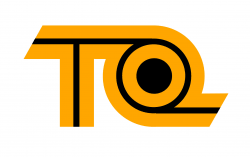Title Page
-
Site conducted
-
Report No.
-
Conducted on
-
Prepared by
-
Definition-
Repetitive: This finding has occurred during last inspection and yet to be solved.
New: This finding is newly encountered during this inspection or has been closed last time.
Safe: Safe and maintain the good practices.
None: Not Applicable or Not Available during the inspection.
1. MACHINERY & EQUIPMENT
-
1.1. Are the electrical appliances and power tools (e.g. welding machine, grinder, jig saw, etc.) safe and free of frayed cable, broken socket & plugs?
-
1.2 Are the grinders, cutters, and drillers maintained in good working condition and rotating parts properly guarded?
-
1.3 Are the workers grinding in a safe manner (i.e. clamp, axillar handle, posture, etc.)?
-
1.4 Are the gas cylinders in safe and good condition (flash back arrestor, pressure gauge, air hose, chained, trolley, gas actuator, etc.)?
-
1.5 Are the hydraulic press, bending, shearing machine in safe and good working condition (guarding, sensor, oil leakage, etc.)?
-
1.6 Are the overhead/jib cranes, hoist and column lifter in good condition (wire rope, sling rope, emergency stop button, button, unusual noise, pendant cable, cab fixture, etc.)?
-
1.7 Are the machine (i.e. shearing machine, bending machine, overhead crane, hoist, Jig, etc.) operated by assigned person and operated in a safe manner?
-
1.8 Are the supporting stands placed after the bus is lifted using the column lifter?
-
1.9 Are the platform and ladders in good working condition (e.g. lock, steps, handrails, platform, etc.) and parked safely?
-
1.10 Are the forklift & reach truck in safe and good working condition (tyre, leaking, buzzer sound, etc.)?
-
1.11 Are the forklift and reach truck operated by trained person and in a safe manner (wear safety vest, not speeding, without passenger, not overloaded, sound horn, etc.)?
-
1.12 Are the pallet jack, trolley, other lifting equipment in safe and good working condition?
2. 5S
-
2.1 Are the walkways free of fire sparks, obstacles and fall hazards?
-
2.2 Are the bus doors (luggage, flip, driver, entrance) closed after work is completed?
-
2.3 Are the wheel stoppers used for parked bus and truck (finished or unfinished)?
-
2.4 Are the unused tools and equipment returned to the designated areas and not scattered around the floor?
-
2.5 Are the materials (e.g. V-EMB, parts, pails & containers) arranged and stacked in a safe manner (suitable height, stable, stopper, obstacles, protruding objects, etc.)?
-
2.6 Are all the wooden pallets used for the storage safe and in good condition?
-
2.7 Are the chemicals stored at the designated area only (with chemical signage) and away from ignition source (e.g. welding, grinding, cutting, smoking area, etc.)?
-
2.8 Are the chemical containers closed (when not in use) and away from ignition source?
-
2.9 Are the scrap materials/rubbish kept and arranged in a safe manner (e.g. blocking, sharp edges, stacking, protruding, etc.)?
-
2.10 Are the firefighting equipment and electrical panels free of obstacles?
-
2.11 Are the work areas (working tables, cabinets, machineries, storage rack, tools box, etc.) clean and free of sharp edges?
-
2.12 Are the work floors free of trip and fall hazards (i.e. oil, wet, uneven, pothole, cables, etc.)
-
2.13 Are the workplaces (indoor & outdoor) free of standing water?
-
2.14 Are the spray booths free of flammables storages (e.g. Paint & Thinner)?
-
2.15 Are the washroom, surau, canteen, meeting room and office clean and tidy?
3. WORK PRACTICES
-
3.1 Are the workers only using bus’s entrance door as entrance and exit?
-
3.2 Are the worker carrying out the work at working table instead of on the floor?
-
3.3 Are the workers following the SOP when working at height (i.e. body harness)?
-
3.4 Are the open flame activities (Grinding, cutting, welding, etc.) carried out distance away from people and flammables materials (e.g. paint, thinner, adhesive, etc.)
-
3.5 Are the painting activities carried out at designated area only (i.e. spray booth)?
-
3.6 Are the platforms on the latch opening safe?
-
3.7 Are the workers climbing up & down the trucks/buses in safe manner ( e.g. 3-point contact)?
-
3.8 Are the workers wearing the appropriate personal protective equipment according to the dress code?
-
3.9 Are the visitors escorted by the staff and wearing the appropriate personal protective equipment when entering to the production?
-
3.10 Do the workers follow the “No Phone” policy in the production?
-
3.11 Are the worker driving the car, truck, bus, and chassis in a safe manner (i.e. competent driver, speed, turning, traffic guide?
-
3.12 Are the loading & unloading activities carried out in a safe manner?
4. OTHER 5S FINDINGS, UNSAFE ACT & CONDITION OBSERVED
- 1
-
Is there any other 5S findings, unsafe act & condition observed?
CONCLUSION/RECOMMENDATION
Conclusion/ Recommendation
-
Very poor EHS MS implementation. Immediate action is required to avoid the disciplinary action taken by the authority.
-
Poor EHS MS implementation. Need to work harder on legal compliance first before move to next level requirements.
-
Moderate EHS MS implementation. A lot of corrective action required.
-
Good EHS MS implementation. Several corrective action required.
-
Excellent EHS MS implementation. Few corrective action required and ready for EHS MS level enhancement.
-
Deadline
Completion
-
Signature








